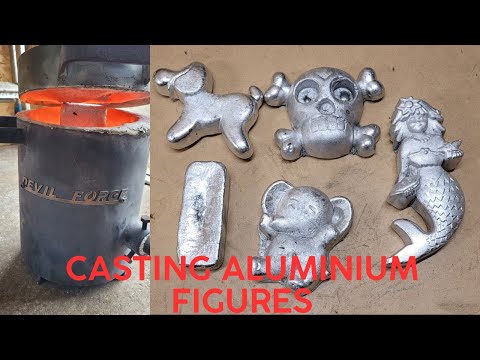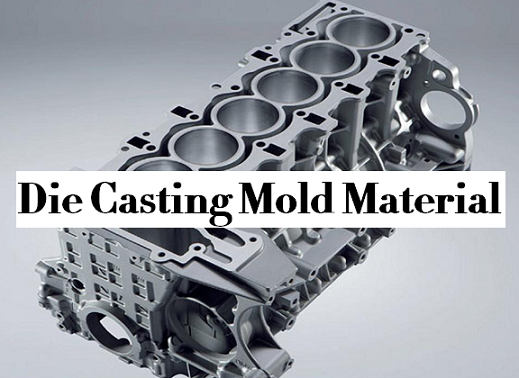9 Easy Facts About Stahl Specialty Company Explained
9 Easy Facts About Stahl Specialty Company Explained
Blog Article
An Unbiased View of Stahl Specialty Company
Table of ContentsNot known Facts About Stahl Specialty CompanyHow Stahl Specialty Company can Save You Time, Stress, and Money.The 9-Minute Rule for Stahl Specialty CompanyThe Single Strategy To Use For Stahl Specialty CompanyExamine This Report about Stahl Specialty CompanySome Known Incorrect Statements About Stahl Specialty Company

If you're creating a metal product, you've likely taken into consideration using aluminum as the base product. Pure light weight aluminum has limited applications, so it is commonly incorporated with other elements, such as silicon, magnesium, and manganese to develop alloys.
(AA), based in North America, has created specifications that regulate light weight aluminum alloys' structure, buildings, and language. There are two types of light weight aluminum alloys wrought and cast.
Getting My Stahl Specialty Company To Work
Cast light weight aluminum alloys are made by melting pure light weight aluminum and combining it with various other metals while in fluid type. Then the mix is poured into a sand, die, or investment mold and mildew. After solidification, the metal is removed from its mold and mildew. At this phase, it remains in either its last kind or as a billet or ingot for additional handling.

The fourth figure, which comes after the decimal point, specifies if the alloy is a casting (xxx. Wrought light weight aluminum alloys additionally begin by integrating molten aluminum with other steels. In comparison to cast alloys, however, they are developed right into their last shape with processes such as extrusion, rolling, and flexing after the steel has strengthened into billets or ingots.
There are lots of small distinctions in between wrought and cast light weight aluminum alloys, such as that cast alloys can have extra considerable amounts of various other steels than wrought alloys. Yet the most significant difference between these alloys is the construction procedure whereby they will certainly go to provide the end product. Besides some surface therapies, cast alloys will leave their mold and mildew in nearly the specific strong kind desired, whereas functioned alloys will go through numerous alterations while in their solid state.
If you think that a wrought alloy may be the finest for your project, take an appearance at a few of our articles that clarify even more concerning specific wrought alloys, such as Alloy 6061 and Alloy 6063. On the other hand, if you assume a cast alloy would certainly be better for you, you can discover more concerning some actors alloys in our Alloy 380 and Alloy 383 articles (coming soon).
Stahl Specialty Company Fundamentals Explained
When choosing a light weight aluminum factory for your production requirements, it's vital to study a number of aspects. Among one of the most essential aspects to think about is the experience and proficiency of the foundry. Aluminum Castings. Picking a foundry who has the right expertise of the aluminum casting process, and the portfolio to reveal for it, helps to have an effective result for your task
Having the experience and industry understanding to engineer your castings for ideal production and quality outcomes will certainly enhance the project. Making light weight aluminum spreading needs a complex set of procedures to accomplish the right outcomes. When selecting a new aluminum foundry to companion with, guarantee they have considerable sector experience and are experienced about all facets of the light weight aluminum spreading process: layout, manufacturing, product analysis, and item testing.
The factory should also have a tried and tested record of supplying phenomenal products that meet or surpass client expectations. Quality control should likewise go to the top of additional info your list when selecting an aluminum factory. By working with a qualified factory that complies with the criteria for top quality control, you can safeguard the integrity of your item and guarantee it meets your specifications.
By picking a company that uses solutions that meet or exceed your item needs, you can be sure that your job will certainly be completed with the utmost accuracy and effectiveness. Specific light weight aluminum factories focus on specific types of manufacturing procedures or casting methods. Different components call for different production strategies to cast light weight aluminum, such as sand spreading or die casting.
Stahl Specialty Company for Beginners
Die spreading is the name given to the procedure of producing intricate steel elements with use mold and mildews of the part, also referred to as passes away. The procedure uses non-ferrous metals which do not consist of iron, such as light weight aluminum, zinc and magnesium, as a result of the preferable properties of the metals such as low weight, higher conductivity, non-magnetic conductivity and resistance to rust.
Die casting production is quick, making high production levels of elements simple. It creates even more elements than any type of other process, with a high degree of accuracy and repeatability. For more information about die casting and die spreading products made use of while doing so, reviewed on. There are 3 sub-processes that fall under the classification of die spreading: gravity pass away casting (or permanent mold casting), low-pressure die casting and high-pressure die casting.
Despite the sub-process, the die spreading process can be broken down into six actions. After the pureness of the alloy is checked, dies are developed. To prepare the needs spreading, it is vital that the dies are tidy, to ensure that no residue from previous manufacturings stay. After cleaning, the ejection lubrication is used to the die to guarantee a smooth release.
Get This Report on Stahl Specialty Company
The pure steel, also understood as ingot, is included in the furnace and maintained the molten temperature of the metal, which is after that transferred to the injection chamber and infused right into the die. The stress is after that kept as the metal solidifies. When the steel strengthens, the cooling procedure begins.
(https://www.pearltrees.com/stahlspecialc#item698040152)
The thicker the wall of the part, the longer the cooling time due to the amount of indoor steel that likewise needs to cool down. After the element is completely cooled, the die cuts in half open and an ejection system pushes the part out. Adhering to the ejection, the die is closed for the following injection cycle.
The flash is the added material that is cast throughout the process. Deburring gets rid of the smaller sized pieces, called burrs, after the cutting process.
The Best Strategy To Use For Stahl Specialty Company

Zinc is one of one of the most used alloys for die casting due to its lower price of resources. It's likewise one of the more powerful and steady metals. And also, it has exceptional electric and thermal conductivity. Its corrosion resistance also permits the elements to be long long-term, and it is among the much more castable alloys due to its reduced melting point - Casting Foundry.
As pointed out, this alloy is one of one of the most typically made use of, yet produces will, sometimes, select light weight aluminum over zinc because of aluminum's production benefits. Aluminum is highly economical and among the extra flexible alloys. Light weight aluminum is made use of for a number of different products and markets anything from home window frameworks to aerospace products.
Report this page